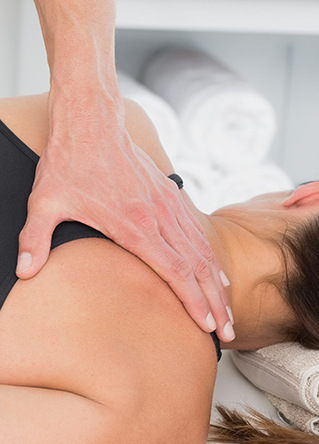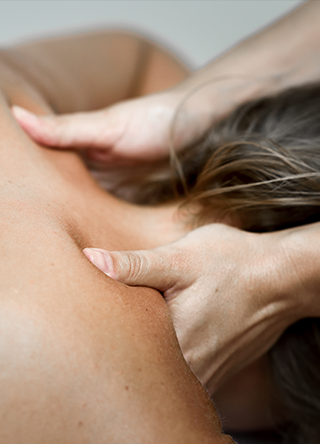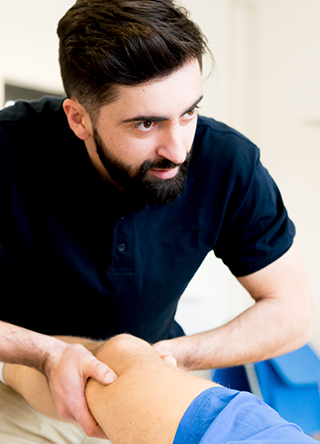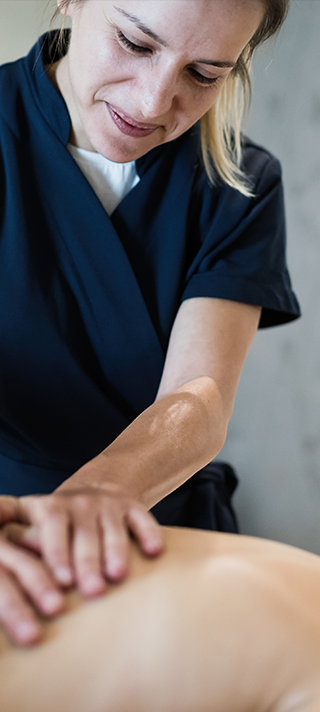What you need to study
What qualifications do you need to be a massage therapist?
The HLT42021 Certificate IV in Massage Therapy is considered the entry-level qualification for becoming a massage therapist. With this qualification, you will have the knowledge and skills to really help people, and you will also be eligible for massage association membership and insurance.
A number of qualifications and degrees include a massage component, but the Certificate IV in Massage Therapy and the HLT52021 Diploma of Remedial Massage have been specifically designed for those who wish to become massage therapists and remedial massage therapists, respectively.

What will you
learn?
You will learn about the anatomy and physiology of the human body, massage techniques such as Swedish relaxation massage, and assessment techniques such as questioning, palpation, and movement observation. This knowledge and range of skills will equip you to provide clients with treatment plans tailored to their specific needs.
The Diploma of Remedial Massage delves deeper into more advanced massage practices, such as trigger point therapy and neuromuscular techniques, as well as assessment techniques such as static posture, range of motion, and manual muscle testing. It also focuses on the area of special orthopaedic testing, which allows remedial massage therapists to further investigate a client’s pain point or challenges and unearth more advanced dysfunctions.

What are the
requirements?
You don’t require prior massage knowledge to study your Cert IV in Massage or Diploma of Remedial Massage, however, you do need to be 18 years or older and possess a sound language, literacy and numeracy skill base to complete these qualifications.

FAQ
How long does it take to become a certified massage therapist?
Is it hard to become a massage therapist?
Getting registered as a massage therapist in Australia
Registering as a massage therapist can bolster your credentials because clients and employers can have confidence that you are staying up to date with current information and are constantly learning and developing your skills. There are a large number of massage associations to choose from, so it is important to research which one suits you best.
Registration with a massage association requires you to have insurance that protects you and your massage clients. If you are attaining the Diploma of Remedial Massage, this will also enable you to gain private health provider numbers. Each massage association will have a preferred insurer, but you may choose a different one.

Getting a job as a qualified massage therapist
Career opportunities can include home or mobile clinic (self-employed), working within an established clinic (subcontractor), within a multi-modality clinic with physiotherapists and chiropractors, or in a day spa, retreat, cruise ship or fitness facility.
When entering the industry, it is imperative that you understand the responsibilities you have as a massage therapist to your clients, including but not limited to:
- Providing ethical care within the scope of practice of a massage therapist
- Educating your clients in self-care
- Subjective examinations (health history, questioning etc)
- Objective examinations (static posture assessment, special orthopaedic tests
- Soft tissue manipulation through various massage techniques such as deep tissue massage and stretching
- Ongoing support and care

FAQ
How can you market yourself as a massage therapist?
How much money do massage therapists make?
Key Takeaways

If helping people feel better and move better sounds like your kind of job, you may be well suited to a career in massage therapy. It's a physically demanding, but extremely rewarding, role.

To study for a career as a massage therapist you don't need any prior experience in the field - just sound basic educational skills and a passion for massage.

The Certificate IV in Massage Therapy from the AIF takes 24 weeks to complete, and the Diploma of Remedial Massage takes 48 weeks. After gaining your qualification, you'll need to register with an industry association, get insured and, if you intend to set up your own business, set yourself up with an ABN.

The HLT42021 Certificate IV in Massage Therapy is the entry-level qualification for becoming a massage therapist, while the HLT52021 Diploma of Remedial Massage also explores more advanced massage techniques and this program is the only massage qualification to include an AIF Chronic Disease and Pain Care Therapist™, which enables graduates to manage clients experiencing pain and chronic disease. In addition, students will also become an AIF Certified Functional Movement Therapist™, learning how to identify and treat movement-based dysfunction and prevent potential and recurring injuries.

Once you've completed these other steps, you're all set to start working as a massage therapist, either employed by an established clinic or business, or working for yourself in a wide range of settings, from mobile clinics to cruise ships and gyms. As your experience, expertise and reputation grow, so will your earning potential, and as long as the demand is there, you'll be able to choose how much you charge for your services, building a successful and lucrative long term business.
If you’re considering a career in massage therapy, hopefully this page has provided you with some useful food for thought. If you have any further questions about studying to become a massage therapist or remedial massage therapist with AIF, however, you might want to check out these FAQs.
*Where Certificate IV in Massage or Cert IV is mentioned, it refers to HLT42015 Certificate IV in Massage Therapy.
*Where Diploma of Remedial Massage or Diploma is mentioned, it refers to HLT52015 Diploma of Remedial Massage.
Make Massage Therapy Your New Career
Could this be the year that you transform your life by qualifying as a massage therapist?
Set yourself up for a career of success in massage therapy with AIF today. If you have any further questions about how to become a massage therapist, please have a look at these FAQs.
Or if you’d like to talk to a member of our team, don’t hesitate to get in touch here.
Gain your career advantage with the most recognised health and fitness education in the industry.
Speak with our friendly Careers Team on
1300 669 669 or enquire now online.














